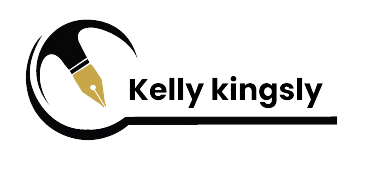
What can states do when fiscal revenue cannot finance the economy alone?
Financing a trans-formative development agenda in Cameroon require that available resources be used more effectively and strategically to catalyze additional financing from official and private sectors. In the 2011 Presidential election, the incumbent The President of the Republic indicated in his Greater Achievements Programme that he will ensure that Cameroon’s democratic system functions normally. To achieve the above, the development of basic infrastructure (roads, bridges, schools, low cost housing, sports facilities, etc.) was indisputably one of the major thrusts of the Greater Achievements policy where marked progress was recorded. Cameroon need therefore to step up efforts to finance its own development by improving domestic resource mobilization, including by strengthening tax administration, better harnessing natural resource revenue, and curbing illicit financial flows. Unfortunately, this is not the objective of this project.
This project however intends to reviews and proposes to the Ministry of Finance a range of existing and potential innovative financing sources and tools like bond financing, institutional investors, Diaspora bonds, pull mechanisms, advance market commitments, resources-for-infrastructure deals, and climate finance. Not all of these options are feasible in the case of Cameroon. In fact, the challenge and the objective of the Cameroonian government, as this project will recommend, lies in establishing a supporting country-level policy framework and credible commitment to build domestic capacity and combat bottom of the pyramid poverty in expanding and utilizing the options that the project aims to recommend and make them available as soon as possible to deal with financial challenges that the country faces.
INNOVATIVE SOURCES OF FINANCE
The cost of achieving any development goal depends on the efficiency with which the objective is pursued, taking into account the quality of underlying policies and practices. The project discusses a number of these alternative sources that are needed to complement existing sources of income that Cameroon is utilizing
- Pull mechanisms for development, which involve ex-post economic incentives for innovation to solve a well-defined problem. By linking payments to the actual impact of an innovation, they can lay the foundations for a self-sustaining, competitive market for the relevant product.
- Resources-for-infrastructure (RfI) financing model aims to overcome limited capital market access and domestic capacity constraints. Under RfI, oil or mineral extraction rights are exchanged for turnkey infrastructure, complementing standard tax and royalty regimes.
- Diaspora resources (Diaspora bonds and remittance-backed bonds) could help finance infrastructure projects.
Linking climate finance and development finance can enhance development impact by allowing the fight against poverty to take climate effects into account and vice versa. Comprehensive a) carbon pricing policies, b) the removal of inefficient fuel subsidies, and c) cap-and-trade schemes are promising options to mobilize larger and higher-return investments.
- Reallocation of untargeted and inefficient energy subsidies to social safety net programs. Simply increasing public spending is unlikely to lead to better outcomes in countries suffering from poor governance.
- Harnessing Sustainable Streams of Natural Resource Revenue. Capacity constraints often prevent countries like Cameroon from effectively and efficiently obtaining revenues from extractive industries. Investments in natural resources commonly involve high sunk costs for a project that can last decades. Rents can be substantial and represent a large share of the home country’s GDP and government revenue. Natural resource-rich countries like Cameroon could improve their capacity to negotiate fair contracts in extractive industries. To help Cameroon retain more of its natural resource rents, the government of Cameroon must pursue initiatives like the Extractive Industries Transparency Initiative (EITI) that promote greater transparency in revenue flows and contract disclosure.
- Subsidy Reform. Subsidy reform is one of the main areas in which public resources can be redirected to more effective uses. It is not only important for mobilizing domestic resources but also for getting incentives right. While it is important to remove harmful subsidies, increasing subsidies for activities with positive externalities might be the proper course of action. An extensive body of research has demonstrated that food and fuel subsidies are often poorly targeted and end up disproportionately benefiting the wealthy and middle class.
The project will explore the steps needed to remove harmful subsidies, thereby freeing public resources that can then be directed towards investments with higher social returns. Energy subsidies particularly fossil fuel subsidies are costly, and these costs are quantifiable and can be measured. Despite their negative environmental impacts, subsidies artificially increase the incentives for using fossil fuels.
- Procurement. Beyond increasing value for money, good practices in procurement can bring additional benefits to Cameroon, including the development of domestic industries and services; better service delivery, e.g., through sound management of PPP contracts in several sectors (health, education, power distribution, and water and sanitation); and transparency, including through public participation in procurement at the local level through community driven development approaches.
In this sub section the project will look at feasible procurement reforms in Cameroon to achieve new financing schemes. Reforms may require new legislation, identifying and eliminating antiquated regulations, and intervention throughout the entire project cycle, from design to planning, tendering, contract execution, and completion.
- Emerging Sources. Given the scarcity of bank lending for infrastructure, the development of non-bank financing for infrastructure is now emerging as the new imperative. International financial markets present a largely untapped pool of capital to finance infrastructure; and institutional investors have the potential to provide an additional source of long term finance.
The project will explore some of these untapped schemes that fit the Cameroonian environment and the level of the country external debt.
Institutional Investors, including Sovereign Wealth Funds. With their growing assets under management and their ability to provide long-term finance, institutional investors, such as pension funds, insurance companies, mutual funds, or sovereign wealth funds (SWF) have potential as pools of non-bank capital for emerging markets infrastructure.
- Carbon Markets. A market that is created from the trading of carbon emission allowances to encourage or help countries and companies to limit their carbon dioxide (CO2) emissions. This is also known as emissions for carbon trading. Carbon emissions trading is a way of reducing greenhouse gases produced by polluters. A relatively novel instrument to generate climate finance can be found in cap-and-trade schemes, which set a limit to the overall emissions, thereby creating carbon credits (emission allowances). Any surplus carbon credits can be traded at carbon markets, thereby generating a new revenue stream for Cameroon. Similarly, project developers can invest in low-emissions projects (so far mainly renewable energy, energy efficiency, waste management, and reforestation) generating carbon-offsets which can be sold at voluntary carbon markets to private consumers and companies who want to reduce their carbon footprint.
The reflection will envisions two major market-based options that currently exist, the carbon trading over its rival, the carbon tax. In short, carbon trading, sometimes called emissions trading, is a market-based tool to limit GHG. The carbon market trades emissions under cap-and-trade schemes or with credits that pay for or offset GHG reductions. Cap-and-trade schemes are the most popular way to regulate carbon dioxide (CO2) and other emissions. The scheme’s governing body begins by setting a cap on allowable emissions. It then distributes or auctions off emissions allowances that total the cap. Member firms that do not have enough allowances to cover their emissions must either make reductions or buy another firm’s spare credits. Members with extra allowances can sell them or bank them for future use. Cap-and-trade schemes can be either mandatory or voluntary.
It must be mentioned that a successful cap-and-trade scheme relies on a strict but feasible cap that decreases emissions over time. If the cap is set too high, an excess of emissions will enter the atmosphere and the scheme will have no effect on the environment. A high cap can also drive down the value of allowances, causing losses in firms that have reduced their emissions and banked credits. If the cap is set too low, allowances are scarce and overpriced.
- Diaspora Bonds. Diaspora resources via Diaspora bonds and remittance-backed bonds—have the potential to finance projects such as railways, roads, power plants, and educational institutions that the country want to launch.
The project will look the feasibility of a Cameroonian Diaspora bond that could have a greater chance of success if the proceeds were to finance projects which interest overseas migrants, such as housing, schooling, hospitals, and community infrastructure projects that could benefit them and/or their families, or their region in their homeland. It also fits with the concept of delivering results.
CONCLUSION
This reflection will attempt to sketch a blueprint for financing development for the construction of basic infrastructure: roads, bridges, schools, low cost housing, and sports facilities in a world with increasingly scarce concessional resources and in an environment where access to long-term financing for development has become more difficult. The challenge for Cameroon is to make the country more attractive destinations for resource from the private-sector and donors. The country can do this by improving the effectiveness with which existing resources are used, enhancing domestic resource mobilization and by making strides to develop and access new sources of financing that the current project intends. This will require a foundation of good polices, supported by the institutional capacity to implement them.
